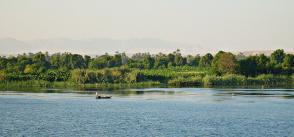
Death of the Nile
The world's longest river is sick - and getting sicker
Booming populations have dirtied and drained it, while climate change threatens to cut its flow. And some fear that competition over its dwindling waters could trigger a regional conflict.
The rains
The rot starts at the source. For as long as the Nile has flowed, Ethiopia’s rains have made up the great bulk – over 80% – of its waters. Fat droplets pour down from July to September, not stopping until the roads have been churned into impassable bogs. Small inland seas emerge almost overnight, slicing the Amhara Plateau into a maze of soggy islets. Gushing out of a forest just south of Lake Tana, the Blue Nile greedily soaks up this bounty, quickly swelling from a stream to a torrent.
Though slightly longer, the White Nile, which originates in East Africa's Lake Victoria and merges with the Ethiopian branch at Khartoum, carries a fraction of the volume. But these rains are not falling as they used to. And that is potentially catastrophic for the entire basin. The Meher, the long summer wet season, is arriving late, and the shorter rains earlier in the year sometimes not at all. “It’s so inconsistent now. Sometimes stronger, sometimes lighter, but always different,” said Lakemariam Yohannes Worku, a lecturer and climate researcher at Arba Minch University
Read the long-form article by Peter Schwartzstein via BBC Africa.
[Photo by zolakoma | Flickr]







